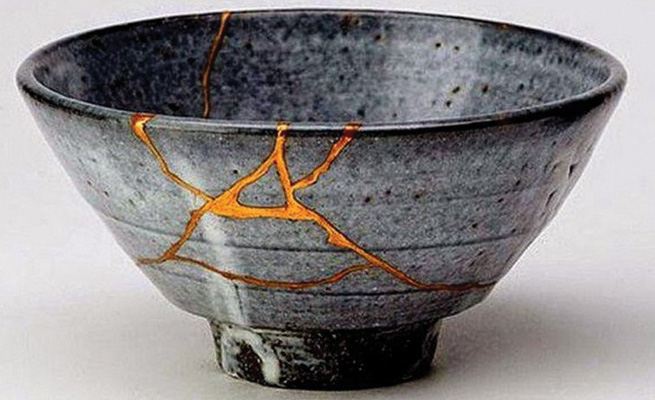One of the most exciting things about visiting a new country is getting to try all the exotic, unusual foods. Japanese cuisine such as sushi and ramen have become widely popular in Western culture, leaving some to wonder what's left to discover. It may surprise you to learn the sweets industry in Japan is prolific, with specialty "wagashi" stores on every shopping strip. The traditional charm of the store front will draw you in, and the variety of ourful goodies in the display cabinet will rouse your curiosity.

What is Wagashi?
The Japanese word "wagashi" is used to describe a traditional sweet, usually enjoyed as an accompaniment to green tea. There are many types, and the appearance and taste of each greatly vary depending on the maker. Wagashi is deeply rooted in the Japanese tradition of hosting tea ceremonies, spanning back to when they were performed by nobles such as the Imperial Family. Aside from looking spectacular, the sweets are offered to balance the bitter taste of the green tea. Some wagashi is so beautiful to look at, it can be difficult to bring yourself to eat it.

You may be surprised by the taste and texture of wagashi, as some of the key ingredients are rarely used to make Western desserts. Many varieties have a centre filled with anko, which is a paste made of red or white beans and sweetened with sugar. Another regularly used product is called mochi, a glutinous rice which has been pounded with a wooden mallet. Before you walk into a wagashi shop, you may want to familiarise yourself with the types of items on offer to avoid buying one of everything; as these small ourful morsels certainly aren't cheap!
Here's a shortlist to get you started. I've listed them in order of flavour subtlety-so if the sound of bean paste makes you queasy, stick to numbers 1-3.
1. Higashi
This sweet is most commonly served at tea ceremonies, as it is small and easy to eat. It is essentially a sugar candy, ored and moulded to depict seasonal and cultural events on the surface.

2. Arare
Usually contained in a cellophane bag, arare are ored rice-puffs which look and taste similar to sugary breakfast cereal. They are given to children to celebrate national holidays and are carried around and snacked on throughout the day.

3. Taiyaki
This fish-shaped dessert divides the opinion of most foreigners, due to its variety of hidden fillings. It traditionally incorporates anko which gets mixed reviews from overseas visitors. However, more recently the crispy waffle-like batter has been used to encase silky custard, cream or chocolate. Modern stalls offer mini versions or combo deals so that you can sample all of them.

4. Dorayaki
You can't avoid anko if you want to try this doughy pancake which usually comes with a cute anime character stamped on top. The Japanese regard anko as a delicacy, which is why it's slathered on before being sandwiched by two fluffy discs. At least if you don't like it, you can scrape it off and eat the sweet batter.

5. Dango
Made of mochi and covered in sugar syrup or potato starch, this skewered dessert is one of the few foods considered socially acceptable to consume while walking in public. The tri-coloured version is often sold at cultural festivals, so follow the trail of people making awkward chewing faces if you want to find the stall holder-just don't be surprised if you end up with mochi stuck to the roof of your mouth for hours later.

6. Daifuku
It's highly popular among Japanese people of all ages, but hard to stomach for many foreigners. It's made up of a generous dollop of anko wrapped in mochi and coated in potato starch, seeds or fragrant leaves. When eaten fresh, the texture has an elastic-like quality. It's one you should definitely try during your stay, but beware that you're likely to love or loathe it.

Now you have some idea of what you're eating when you take your first bite into wagashi. It may not save you from disappointment, but at least spare you time and money trying varieties with similar ingredients. When I lived in Japan, I couldn't get enough of the custard or chocolate filled taiyaki, but that's probably because it reminded me of the delicious dessert waffles Mum used to make back home.

Top tips:
- Make sure you visit a high-quality wagashi store as you're likely to meet the maker and be offered hot green tea to sip on while you're browsing.
- Take a workshop on how to perform a traditional Japanese tea ceremony. You will receive wagashi and learn more about how it is served during the process.
- If you're visiting Japan over the new year, keep a look out for public mochi pounding festivities to see how the rice is turned into a gooey blob.
Casey Hawkins grew up immersed in Australia's sea, sun and surf culture. She first became a teacher because she was passionate about sharing ideas and experiences. Teaching has led her to explore some unique, remote locations and make friends with people from all walks of life. She is most passionate about learning and sharing their stories with others. Website: Nan's Lucky Duck
The views, opinions and positions expressed by the author and those providing comments are theirs alone, and are meant as travel inspiration only. They do not reflect the opinions of Cover-More Insurance. You should always read the PDS available from your travel insurance provider to understand the limits, exclusions and conditions of your policy and to ensure any activities you undertake are covered by your policy.
**Source: https://www.covermore.com/blog/asia/introducing-japanese-sweets-wagashi





